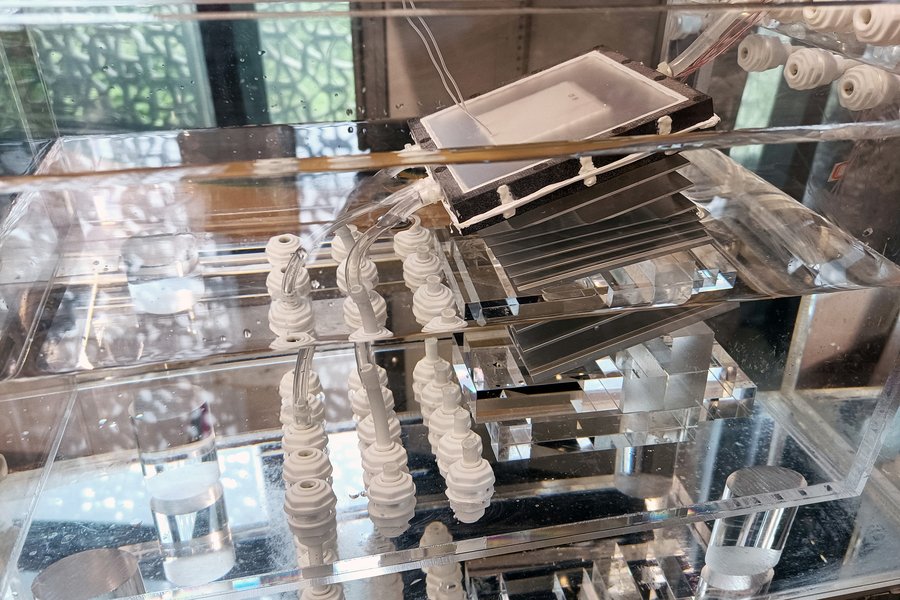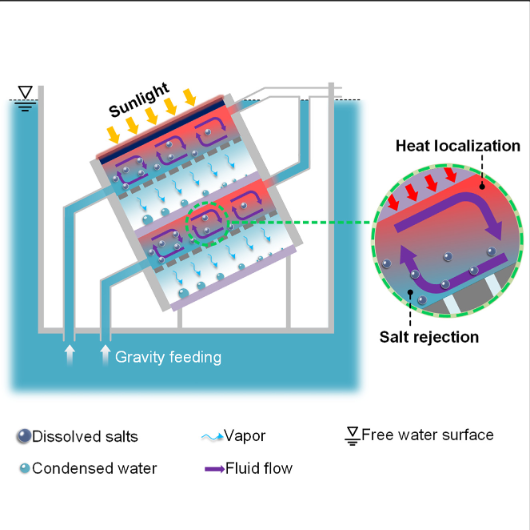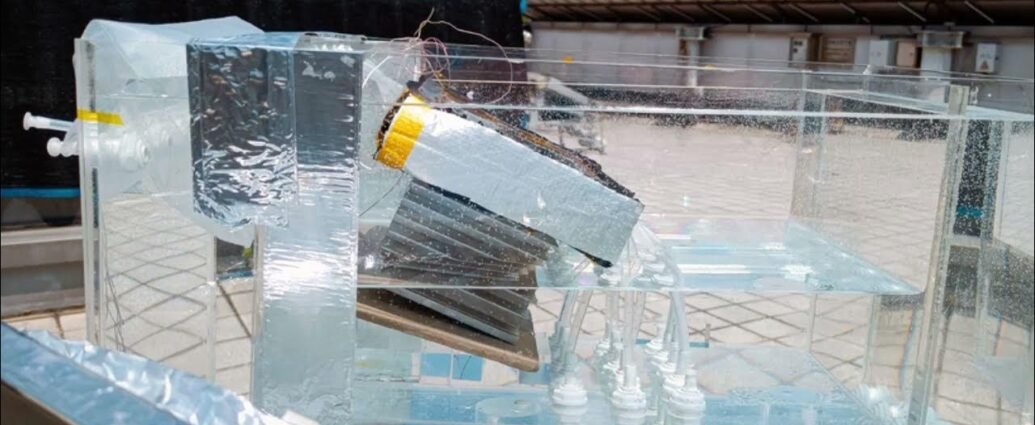MIT scientists have come up with a solar-powered system that can turn salty water into drinkable water. Plus, it can do it in bigger quantities and for less money. This could really help bring down the cost of producing water since it doesn’t need any electricity to work.

The device creates circular water currents called eddies that look like little whirlpools and work kinda like the ocean’s bigger thermohaline circulation. These small eddies help water touch the top layer that’s evaporating while also keeping the salt moving around instead of getting stuck and blocking things up. This circulation, along with the sun’s heat, makes the water evaporate and leaves the salt behind.

Scientists have used a little, thin box covered with a dark material that’s really good at soaking up the solar heat for the device. Inside the box, there’s a top and a bottom part. Water can go through the top part, where the ceiling has a layer that evaporates and warms up the water when it’s in direct contact with the solar heat.
Then the water vapor gets funneled to the bottom part of the box, where a cool layer of air condenses it into clean drinking water.

If the solar-powered system is made as big as a small suitcase, it could churn out around 4 to 6 liters (1 to 1.5 gallons) of drinking water every hour and keep running for many years before needing new parts. At that size and efficiency, the system could provide drinking water at a rate and cost that’s even cheaper than tap water.
Reference- MIT Media Outreach, Joule, Interesting Engineering, Electrek






